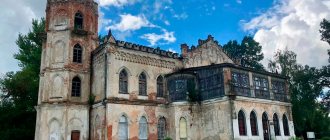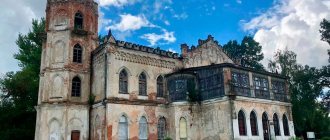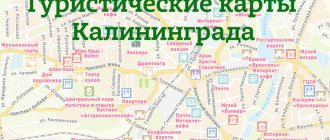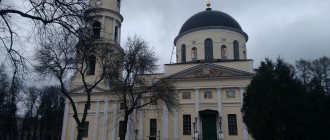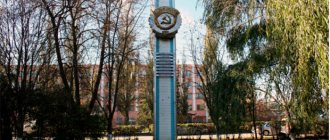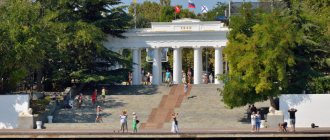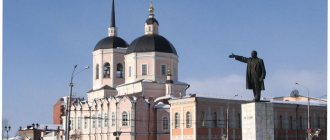- Russia
Kaluga is a city in the Russian Federation, the administrative center of the Kaluga region. Located on the banks of the Oka River and on its tributaries - the rivers Yachenka, Terepets, Kaluzhka, Kievka, 160 km southwest of the center of Moscow, 80 km from the new borders of the city of Moscow.
Geography
The Kaluga region borders on the Moscow, Tula, Bryansk, Smolensk, and Oryol regions. From north to south, the region stretches for more than 220 km from 53° 30′ to 55° 30′ northern latitude, from west to east – for 220 km, the territory area is 29.9 thousand square meters. km. The most important international highways and railways pass through the territory of the region: Moscow – Kaluga – Bryansk – Kyiv – Lvov – Warsaw.
What plants grow in the Kaluga region?
The Kaluga region is located within the forest zone and includes two subzones: coniferous-deciduous and broad-leaved forests. In coniferous-deciduous forests grow: spruce, pine, birch, aspen, linden, oak. In broad-leaved forests grow: oak, linden, ash, elms, birch, aspen, maple, willow, apple tree, rowan.
Interesting materials:
Is it possible to watch smart TV without the Internet? Is it possible to remove the cross at night? Is it possible to withdraw interest from a Sberbank deposit? Is it possible to film in a police station in 2022? Is it possible to harvest rose hips after frost? Is it possible to keep a mink at home? Is it possible to salt food for infants? Is it possible to salt fish in an iron pan? Is it possible for a specialist to enroll in a master's program on a budget? Is it possible to cut down a birch tree on your site?
Story
To this day, the cause and date of the emergence of the city of Kaluga remains a subject of debate among scientists and researchers. The official founding date of the city is considered to be 1371, the year of the first mention of Kaluga in written sources that have survived to our times. Even the first historians of the city of Kaluga noted that the city was much older than its official age. This version is confirmed by data from archaeological research in places of ancient settlements on the territory of modern Kaluga.
There were three medieval fortifications on the territory of the city: one at the mouth of the Kaluzhka River, at its confluence with the Oka, another upstream of the Kaluzhka, in the vicinity of the village of Zhdamirova, and the third, known as Semyonovo fortification, on the banks of the Yachenka River. The first excavations at the settlement at the mouth of the Kaluga were carried out at the end of the 19th century. archaeologist I. D. Chetyrkin, who discovered traces of a fire and remains of pottery on it. Subsequent excavations showed that two settlements on Kaluzhka had existed since ancient times.
The oldest historian of Kaluga, academician V.F. Zuev, who lived in the 18th century, recorded a legend according to which Kaluga was moved to a new place three times, and he also considered the first place to be a settlement at the mouth of Kaluga.
In the 13th – 14th centuries, the Kaluga lands were part of one of the Verkhovsky principalities, Novosilsky or Tarussky. From the middle of the 14th century, Kaluga became the object of struggle between Moscow and Lithuanian princes.
Kaluga local historians and independent researchers of the history of the Kaluga region put forward a version about the emergence of Kaluga as a Tatar-Mongol administrative and tax center during the formation of the Baskas in Rus',
however, this hypothesis has not yet been reflected in authoritative sources recognized by the scientific community.
In 1371, the borders of the Moscow Principality came close to the territory of modern Kaluga. Historian V.N. Temushev Fr.
The Lithuanian princes believed that Kaluga was unfairly “taken from them by Moscow.” The first written mention of Kaluga is connected with this, which is contained in a letter from the Lithuanian prince Olgerd to Patriarch Philotheus of Constantinople, dated 1371.
The next mention of Kaluga is contained in the so-called spiritual charter of Dmitry Donskoy (1389), in which he bequeathed the cities of “Koluga and Grove” to his son Andrei in the Mozhaisk principality. Since that time, Kaluga has been invariably mentioned in sources as the possession of Moscow princes and their heirs.
For a number of centuries, the Kaluga region was a leading outpost that repelled the attacks of numerous foreign conquerors. In 1480, the “Great Stand on the Ugra” put an end to the two-century Tatar-Mongol yoke.
By decree of Empress Catherine II of August 24, 1776, the Kaluga governorship was established, which was inaugurated on January 15, 1777. The governorship center took on a new look; the layout and development of Kaluga to this day represents a brilliant achievement of Russian urban planning art of the late 18th - early 19th centuries. In 1777, the provincial theater was opened - now one of the oldest in Russia. During the Patriotic War of 1812, Kaluga was the main rear base of the Russian army for several weeks.
It was the Kaluga province that became the “limit of enemy invasion”; the Battle of Tarutino and the Battle of Maloyaroslavets took place here, after which the retreat of Napoleon’s great army began. The territory of the region became the scene of heavy fighting during the Great Patriotic War. Podolsk cadets, Komsomol members of the Lyudinovsky underground, pilots of the Normandy squadron, hundreds of thousands of soldiers and commanders of the Red Army fought heroically on Kaluga land.
On July 5, 1944, by decree of the Presidium of the Supreme Soviet of the USSR, the Kaluga region was formed, which included 27 districts from the Smolensk, Oryol and Tula regions. After the liquidation of the USSR, the Kaluga region became a subject of the Russian Federation. The most significant sector of the Kaluga region's economy has been and remains industry. It generates more than half of the regional budget revenues, and employs every fourth working resident of the region.
The history of the city, or how Muscovites and Lithuanians did not divide Kaluga
Try to imagine the cradle of astronautics... If your imagination stands still or, on the contrary, gallops into the wilds of fantasy, then to compare your images with reality you need to go to Kaluga, where the ideas of conquering the cosmic depths were born and nurtured.
Monument to K.E. Tsiolkovsky in Peace Square
Of course, the ancient builders of Kaluga did not know the word “cosmonautics” and were not making a cradle, but were busy with purely earthly problems - protection from enemy raids. Believe it or not, in the 14th century the Kaluga land was constantly the cause of confrontations between the Moscow principality and the Lithuanian principality. Now it seems like a funny joke (where is Moscow, where is Kaluga and where is Lithuania?), but back then it couldn’t be more serious.
Otherwise, why would the Lithuanian prince Olgerd complain to Patriarch Philotheus himself in Constantinople that the Moscow princes of the city (including Kaluga) had taken it away from him? It is this complaint that dates the emergence of the city of Kaluga - 1371, although, of course, even before Olgerd’s letter, the Kaluga fortress already stood on the high bank of the Oka River, 190 kilometers southwest of Moscow.
Stele on the road ring
Before Kaluga acquired a space brand, it suffered many troubles and hardships: either from the Tatar-Mongols, whose yoke was ended in the vicinity of Kaluga after the Great Standing on the Ugra, or from the “pestilence”, which left fewer survivors thousands of Kaluga residents, then from a fire when all the wooden Kaluga burned out.
Monument in honor of the Great Standing on the Ugra
If you list numerous disasters, it will be difficult to stop, because only a tsunami is missing, and that is for the reason that the Kaluga Sea is just a reservoir, and Kaluga is located in a quiet seismic zone in the central part of Russia. Be that as it may, Kaluga survived and even in the 17th and 18th centuries was a very prosperous city. The city is still striving for a new state of prosperity.
Entrance to Kaluga from the Oka
Modernity
Kaluga is currently a city with developed infrastructure, a major transport hub, one of the scientific, cultural, economic and spiritual centers of the Central Federal District of Russia. Mechanical engineering and automobile manufacturing are actively developed. Kaluga is one of the historical centers of Russia, where many architectural monuments have been preserved. Kaluga was three times among the top three in terms of cleanliness and amenities among Russian cities that are administrative centers of constituent entities of the Russian Federation and with a population of 100 to 500 thousand people: 1st place in 2002, 3rd place in 2003, 1st place according to the results of the competition held in 2012.
- In 2009, the Central Bank of the Russian Federation minted a commemorative non-precious 10-ruble coin dedicated to Kaluga from the “Ancient Cities of Russia” series.
- The route of the Olympic Torch Relay of the 2014 Winter Olympic Games in Sochi passed through Kaluga. The relay began on October 7, 2013 in Moscow and ended on the opening day of the Olympics on February 7, 2014.
- The Olympic flame arrived in Kaluga on October 13, 2013 from the city of Yukhnov, Kaluga region. From Kaluga, the Olympic flame went to the Yasnaya Polyana estate in the Shchekinsky district of the Tula region and further along the route of the Olympic torch relay of the 2014 Winter Olympics.
- On April 19, 2016, it became known that Kaluga was included in the list of cities included in the Golden Ring.
Crime
The regional center of the Kaluga region, compared to the region, is a fairly calm city in terms of crime. The most common crimes are theft, followed by drug trafficking, fraud and robbery.
High-profile crimes are rare in Kaluga. One of the most sensational crimes not only in the local press, but also at the Russian level is when in August 2011, drunken teenagers burned alive a homeless man sleeping on the grass in a park near the square. Victory. First they put out cigarettes on him, then doused him with flammable liquid and set him on fire.
A terrible event occurred in November 2011. Having received a bureaucratic letter refusing to provide a subsidy for an artificial limb for his disabled son, the head of the family, in despair, killed his son, wife and pregnant daughter, and then committed suicide.
In other cases, some high-profile crimes evoke ironic ridicule among Kaluga residents rather than fear and indignation. How to react to the crime of a drunk policeman who decided to shoot with a traumatic pistol in one of the entertainment establishments and accidentally injured his buttock with a rubber bullet?
A few more "original" crimes. In March 2012, robbers managed to steal an ATM containing one and a half million rubles from a shopping and office center.
You can't take this bag of money away
Just recently, a man of Caucasian nationality so heartfeltly told a gas station employee about his misfortune and the traffic police bribe-takers who were demanding money from him or depriving him of his rights, that the girl with her own hands gave him first 3 thousand, and then a total of 25 thousand rubles.
How can one not remember the famous song: “You don’t need a knife for a fool, you’ll lie to him big time - and do with him what you want.”
Population
According to preliminary data provided by Kalugastatstat, the population of Kaluga as of January 1, 2022 is 343.424 thousand people. We remind you that the population of Kaluga as of January 1, 2016 is 341,986 thousand people. According to preliminary estimates, the population of Kaluga as of November 16, 2016 is 355.887 thousand people. It is worth recalling that the number of residents of Kaluga as of January 1, 2015 was 342.936 thousand people. At the same time, the population of the city of Kaluga as of January 1, 2014 was 334.191 thousand people. It is worth noting that the number of city residents as of January 1, 2013 was 331, 351 thousand people. The population of the regional center tends to increase annually to 8 thousand inhabitants. The city is home to Russians, Ukrainians, Belarusians, Tatars, as well as residents of other nationalities. It is noteworthy that as of January 1, 2015, 1.010486 million people lived in the Kaluga region
According to a preliminary estimate of the number of residents of the region, the population of the Kaluga region as of January 1, 2022 was 1.227122 million people. At the same time, the population of the Kaluga region as of January 1, 2016 was 1.225741 million people.
Famous people
The most famous resident of Kaluga was the pioneer of rocket science Konstantin Tsiolkovsky.
Other famous people include:
- Alexander Amfiteatrov
- Yuri Averbakh
- Mykola Azarov
- Pafnuty Chebyshev, mathematician
- Alexander Chizhevsky
- David Edelstadt
- Alexander Grechaninov, Russian-American composer
- Jonah from Hankou
- Andrey Kalaichev
- Valery Kobelev, ski jumper
- Mikhail Linge
- Pavel Popovich, cosmonaut, the only person to receive two honorary citizenships of Kaluga (1962 and 1964).[23]
- Nikolay Rakov
- Imam Shamil
- Nikolay Skvortsov, swimmer
- Yulia Tabakova
- Georgy Zhukov
- Olesya Zykina, Athlete 400m
- Bulat Okudzhava, lived and taught literature in a public school in the 1980s.
- Seraphim Tulikov
Economy of the region
Indicators of socio-economic development
- Growth in volumes of shipped products of own production – 110.2%
- Growth in the volume of work performed by type of activity “construction” – 137.3%
- Growth in retail trade and paid services turnover – 131.1% and 128.2%, respectively
- Growth in investment in fixed capital – 115%
- Average salary growth – 119.1%
- Inflation rate decreased by 1.2 points compared to the previous year
- Average salary as of 01/01/2007 – 9,792.8 rubles
The most economically developed are the central, northeastern and southwestern regions of the region, where the majority of industrial enterprises and successfully operating agricultural producers are concentrated.
Industry is the most dynamically developing and most significant sector of the economy of the Kaluga region, where more than half of the regional budget revenues are generated. The industrial potential of the region is represented by sixteen industries, in which 1,700 enterprises carry out economic activities.
Sectoral structure of industrial production:
- Mechanical engineering and metalworking – 41.9%
- Food industry – 23.4%
- Forestry, wood processing and pulp and paper industries – 11.4%
- Electric power industry – 9%
- Construction materials industry – 8.1%
- Chemical and petrochemical – 1.7%
- Light industry – 1%
- Other industries – 3.5%
Agro-industrial complex
There are 457 agricultural organizations, almost 2,000 peasant farms and about 200 thousand personal subsidiary plots in the region. The industry accounts for 12.4% of the value of the gross regional product. 52.4 thousand workers are employed in agriculture (10.9% of all employed in the regional economy).
Structure of agricultural production in all categories of farms:
- Potatoes – 26.7%
- Livestock and poultry meat – 21.9%
- Milk – 17.4%
- Vegetables and melons – 14.2%
- Fruit and berry crops – 5.4%
- Eggs – 5.1%
- Cereals – 3.5%
- Feed crops – 3.2%
- Fiber flax – 0.1%
- Other products – 2.5%
On the territory of the region there are five research institutes and two higher educational institutions that are engaged in research and development work for the agro-industrial complex.
The construction complex of the region unites more than 850 construction organizations and about 50 design and survey organizations. A variety of forms of ownership have been established in construction. Of the total number of organizations, more than 90% are privately owned. Construction is one of the significant sectors of the region's economy. Every ninth working resident of the region is employed in it. Industry organizations form approximately a tenth of the regional budget revenues.
The energy supply of the Kaluga region is represented by the generating capacities of JSC Kalugaenergo, which is part of RAO UES of Russia. The energy system provides centralized power supply over an area of 29.9 thousand km2. The region's power supply system includes 149 substations with an authorized capacity of 3866.5 MVA, more than 1000 km of cable and 250 km of overhead power lines. The heat supply system is represented by more than 120 boiler houses operating primarily on gas fuel; the length of the heating networks is more than 450 km.
Investment activities
Over the years, the most attractive industries for investment have been the food, forestry, woodworking and pulp and paper industries, mechanical engineering and metalworking, and the construction materials industry. In the sectoral structure of investments in fixed capital, more than 55% of the volume falls on industries producing goods. The leading place among these industries is occupied by industry, where enterprises with the most profitable assets and investment resources are concentrated. The rating agency "Expert RA" included the Kaluga region in the list of territories of the Russian Federation where investment attractiveness is consistently increasing. There is a steady downward trend in investment risk. The Kaluga region is one of the twenty regions of Russia with minimal investment risk. The successful cooperation of foreign businesses with the regional authorities has shown that it is possible and necessary to work with the region. The total volume of foreign investment in the real economy of the region over the past five years amounted to about 350 million US dollars.
The main countries that invest in the regional economy are:
- Germany – 57.4%
- Finland – 25.8%
- Türkiye – 16.8%
Climate
Kaluga is humid temperate continental (Köppen climate classification: Dfb
), with warm and humid summers; and long, cold and snowy winters. Winter extreme records can reach -45 °C (-49 °F), while summer heat can reach +40 °C (104 °F), but is typically between -5 °C (23 °F) and − 20 °C (−4 °F) in winter and 15 °C (59 °F) to 30 °C (86 °F) in summer in Kaluga.
| Climate data for Kaluga, Russia (period 1961–1990) | |||||||||||||
| Month | Jan | Feb | Mar | Apr | May | Jun | Jul | Aug | Sep | October | But I | December | Year |
| Average high °C (°F) | −6.6 (20.1) | −5.0 (23.0) | 0.4 (32.7) | 10.3 (50.5) | 18.7 (65.7) | 21.5 (70.7) | 23.0 (73.4) | 21.9 (71.4) | 15.7 (60.3) | 9.0 (48.2) | 0.7 (33.3) | −3.7 (25.3) | 7.2 (45.0) |
| Daily average °C (°F) | −10.1 (13.8) | −9.0 (15.8) | −3.5 (25.7) | 5.7 (42.3) | 12.7 (54.9) | 15.8 (60.4) | 17.5 (63.5) | 16.3 (61.3) | 10.9 (51.6) | 5.4 (41.7) | −1.9 (28.6) | −6.6 (20.1) | 4.4 (39.9) |
| Average low °C (°F) | −13.5 (7.7) | −12.9 (8.8) | −7.4 (18.7) | 1.0 (33.8) | 6.7 (44.1) | 10.1 (50.2) | 12.0 (53.6) | 10.7 (51.3) | 6.1 (43.0) | 1.8 (35.2) | −4.5 (23.9) | −9.5 (14.9) | 0.1 (32.2) |
| Average precipitation mm (inches) | 39 (1.5) | 33 (1.3) | 35 (1.4) | 39 (1.5) | 43 (1.7) | 77 (3.0) | 80 (3.1) | 71 (2.8) | 55 (2.2) | 50 (2.0) | 53 (2.1) | 55 (2.2) | 630 (24.8) |
| Source: www.meteoinfo.ru "www.meteoinfo.ru". Retrieved September 3, 2012. | |||||||||||||
Education
The city is home to several higher educational institutions with a long history, as well as universities that emerged in the late 1990s. In addition, there are municipal schools of general education and special educational institutions. You can get a specialized secondary education in Kaluga at numerous technical schools and colleges that train mechanics, builders, and representatives of other professions.
In Kaluga, a significant place is devoted to higher educational institutions, the most popular of which are:
- Kaluga State University named after K. E. Tsiolkovsky,
- Kaluga branch of MSTU named after. Bauman,
- Kaluga branch of the Financial University under the Government of the Russian Federation,
- Kaluga branch of Moscow University of Humanities and Economics
In 2014, the maximum level (100%) of equipping the workplaces of primary school teachers with desktop computers or laptops was reached. By
According to the city education department, in 2014, the average salary of teachers was 29,756 rubles.
Twin Cities - Twin Cities
See also: List of sister cities and sister cities in Russia
Kaluga double from:[24]
- Suhl, Germany (1969)
- Lahti, Finland (1998)
- Tiraspol, Moldova (2005)
- Panorama, Greece (2011)
- Minsk, Belarus (2015)
- Binzhou, China (2015)
- Yalta, Ukraine (2016)
- Nis, Serbia (2017)
Partner cities
In addition to its sister cities, Kaluga cooperates with:[24]
- Clean Water, USA (1992)
- Xianyang, China (2000)
- Tula, Russia (2002)
- Orel, Russia (2003)
- Smolensk, Russia (2003)
- Makhachkala, Russia (2012)
- Tsiolkovsky, Russia (2016)
- Ryazan, Russia (2017)
- Tambov, Russia (2017)
- Pardubice, Czech Republic (2019)
Districts and real estate of Kaluga
Officially, the city of Kaluga is divided into three districts with traditional Soviet names: Moskovsky, Oktyabrsky and Leninsky. The territory occupied by the city is 168.5 square kilometers.
Kaluga residents remember their belonging to any district by looking at the registration stamp in their passport or because of the need to contact official services. In other cases, it is unlikely that anyone can tell in which district a particular street is located if it is not the closest to their own home. But ask any city dweller where Malinniki or Bushmanovka, or another area of local geography is located, they will not only explain to you, but also tell you the number of a trolleybus or minibus.
The center still remains in some places a “sunny city” where buildings from the 18th-19th centuries have been preserved in the yellow and white colors traditional for that time.
However, the historical center of the city is increasingly occupied by banks and shopping and entertainment complexes, displacing traditional two-story houses in sunny colors. You walk along the central street of Kirov, which is no more than two kilometers long, and you constantly come across signs with the word “bank”. If you believe the map and addresses, there are about twenty of them there (count one bank per 100 m). I wonder how many Kaluga residents are their investors?..
The “near-centre” parts of the city are for the most part developing towards an increase in the number of offices and shops, although housing construction is also being carried out in places where old one-story and two-story houses are being demolished. The cost of primary housing in the central part of the city is equal to the cost of housing near Moscow. This should not be surprising if Moscow has officially expanded its borders to the Kaluga region.
The proximity to Moscow and the development of Kaluga industry advertised everywhere with the attraction of foreign investors played a cruel joke on Kaluga residents. Headlines of articles appear in newspapers and the Internet that Moscow companies are buying up land near Kaluga for construction. The cost of housing, according to the Russian Guild of Realtors, has been in fifth place since the beginning of 2012 after Moscow, St. Petersburg, Yekaterinburg and Khabarovsk. 58 thousand per square meter for a city with a population of just over 300,000 residents and a salary (we will talk about this later) of up to 20 thousand rubles - that’s cool! Many megacities are far from Kaluga in this regard.
Prices for apartments in Kaluga almost do not depend on location and are the same in any microdistrict. The difference is determined solely by the “status” of the apartment: as reported by RGR, “Stalin” buildings cost about 49,000 rubles per square meter, “Khrushchev” apartments - 54,000 rubles, apartments with an improved layout - 58,000 rubles, and elite ones - up to 70,000 rubles per square meter meter. Maybe that's why there are so many banks in Kaluga? Since the beginning of 2012, in terms of price growth, Kaluga is already almost “ahead of the rest of the planet”; it fell a little short of first place, but is firmly in second place, so if you have a desire to buy an apartment in our city, hurry up, prices are mixed with fast-acting yeast.
The currently fastest growing microdistrict is located on the right bank of the Oka and has already received the official name of Pravgorod. Kaluga city planners have truly fantastic plans for it. What kind of miracles were promised to the residents of Kaluga: almost a local “Disneyland” with a cable car across the Oka. In the meantime, the popularity for developers is most likely associated with free spaces, a new bridge, the launch of a trolleybus on the right bank and construction.
In any case, from the former “hole” the right bank is really slowly turning into Pravgorod and, apparently, will be a prestigious area, judging by the construction of luxury apartments and townhouses.
Infrastructure, or Road extreme
The increase in the number of housing under construction in general is a trump factor for the city, and for residents of dilapidated neighboring buildings it is a subject of irritation and envy. Many Kaluga residents cannot afford to put things in order, make repairs and replace internal communications. The maintenance of houses as a whole directly depends on the irrepressible activity of the residents themselves. If there are initiators in the house to get their own housing company with the meticulousness of a woodpecker, you can achieve both repairs and replacement of what is necessary. Compared to the previous period, the state of housing and communal services has begun to improve to a certain extent, however, officials in this area cannot do without incidents and naive confusion (including “confusion” of funds).
As with the cost of housing, Kaluga occupies one of the leading places in terms of prices for electricity, water supply and sanitation in the Central Federal District (if we strive forward, this is true in all respects!). An interesting explanation for this fact, among others, was found by the Minister of Competition Policy and Tariffs. In his opinion, changes in the normative consumption of services are largely to blame. We can only assume that Kaluga residents have stopped turning off the lights at night or are washing continuously, although in fact the abnormal consumption of water and electricity is not related to the residents, but to the state of the water and energy supply systems.
Just as the residents of Kaluga continuously pour water, they also continuously travel somewhere. If earlier the main and only public transport were trolleybuses, which were taken by storm due to the rarity of their passage, now constantly scurrying minibuses in the form of “Gazelles” and PAZ buses will take those who want to any part of the city. Another question is that sometimes it is easier to walk than to drive.
Transport diversity. Transport has already stopped towards the center
Kaluga streets are for the most part narrow, like a bottleneck, and even according to the often quoted phrase of the heroine Irina Muravyova from the film “Carnival,” which was partially filmed in Kaluga, “this is not a city, these are some kind of solid mountains and hillocks!”
With a complete and catastrophic lack of parking, all the sides on the left and right are occupied by cars, so sometimes it is almost impossible for two cars, not to mention buses, to pass each other in the middle of the street.
Maneuvering between holes and ditches...
If we add to this the disastrous state of the roads themselves: a year after repairs with a 10-year warranty, the road begins to look like a bumpy-ditch training ground with manhole covers sticking out in the middle for high-quality obstacle overcoming - one cannot be surprised at the constant traffic collapse. In addition to all this, Kaluga could not ignore one more area of development and recently took an honorable fifth place “in terms of motorization of Russian cities.”
There are persistent rumors that the German investors who built Volkswagen offered to make roads with a 100-year guarantee, but the regional authorities apparently refused to inject funds annually into basic repairs and repairs of already repaired ones, which are much more profitable.
Kaluga residents do not hope that road and transport problems will resolve in the near future, since the speed of their solution is no more than the speed of cars during rush hours, that is, zero. Recent attempts to expand the trolleybus ring in the center and make travel on some streets one-way not only did not improve the situation, but added even more traffic jams and confusion.
How can one not dream together with the governor about the development of air and water transport. In grandiose plans, the Grabtsevo airport, overgrown with weeds, should become the Kaluga international airport, and shipping on the shallowed Oka River, along which the motor ship Luch occasionally passes from Kaluga towards Aleksin, should expand.
What is in complete order in the infrastructure of Kaluga is the number of churches and temples per capita. The Kaluga diocese has put almost all of the churches that were misused (about twenty) in order, and new churches are being built in new microdistricts.
The restored Church of the Nativity of the Virgin Mary, which housed the Pioneer cinema during Soviet rule
If kindergartens were returned and built at the same speed, which Kaluga is sorely lacking, parents of young children would pray for the health of local authorities. For now, they are only limiting themselves to thanks for additional payments of 4,500 rubles from the city budget if the child did not have enough space in kindergarten.
The city is provided with schools, as opposed to preschool institutions. True, some of the former secondary schools, due to the modernization of regional education, have become nine-year schools. Residents of these microdistricts are concerned that these schools will suffer the fate of kindergartens, lost in past years and so needed now.
Transport
City public:
buses, trolleybuses, minibuses.
By car: the federal highway M3 “Ukraine” passes through Kaluga, which connects the city with Moscow, Bryansk, as well as with Obninsk, a science city located in the north of the Kaluga region.7
Intercity bus services depart from Kaluga bus station. Bus routes connect the city with a significant number of settlements both in the region (including Obninsk, Borovsk, Kondrovo, etc.) and other federal subjects (Moscow, Orel, Smolensk, Voronezh, Bryansk, Tula, etc.)
Zheleznodorozhny: Kaluga is an important transport hub on the railway route. The Vyazma-Ryazhsk railway line passes through the city (Kaluga-1 station), the Moscow-Kyiv highway passes through a remote area of the city (Kaluga-2). Kaluga-1 station is exclusively suburban - electric trains to Moscow (including express trains) and Sukhinichi, diesel trains to Fayansovaya, Vyazma and Aleksin, diesel express trains to Tula and Uzlovaya. Long-distance trains stop at Kaluga-2 station.
Suburban train schedule: trains from Kaluga, trains to Kaluga, electric trains in the Kaluga region.
Enterprises
In Soviet times, Kaluga was a large machine-building center, specializing in the production of machinery and equipment. Currently, the industrial potential has been preserved and is being revived thanks to investments, including foreign ones. Technoparks “Grabtsevo”, “Rosva” and “Kaluga-Yug” have been created within the city and its suburbs.
The automotive cluster is actively developing in these industrial zones (Volkswagen, Skoda, Volvo, Mitsubishi, Renault, Peugeot and Citroën cars are assembled).
Industrial structure of Kaluga:
- mechanical engineering – 46%;
- food industry – 35%;
- energy – 13% (Kaluga Thermal Power Plant);
- light industry – 1.5%.
In this regard, Kaluga has recently been called nothing less than “Russian Detroit”.
Sights of Kaluga
Kaluga is one of the oldest cities in the Russian land. It is over 600 years old. The founding date of the city is considered to be 1371, when it was first mentioned in the charter of the Lithuanian prince Olgerd. Located on the southwestern outskirts of the Moscow state, Kaluga land served as its outpost for a number of centuries. In the first half of the 18th century, Kaluga became one of the largest shopping centers in the country. In 1719, the Kaluga province was organized, and in 1776, the Kaluga province. This contributed to the further economic and cultural development of the city. To this day, entire neighborhoods have been preserved in the city, in which many buildings are architectural monuments of past centuries.
State Museum of the History of Cosmonautics named after K.E. Tsiolkovsky (Akademika Koroleva St., 2)
State Museum of the History of Cosmonautics named after K.E. Tsiolkovsky is the world's first and largest space museum in Russia. He
created with the direct participation of S.P. Koroleva and Yu.A. Gagarin. The Museum of Cosmonautics was opened in 1967. The unique exhibitions of the Museum of Cosmonautics reveal the history of aeronautics, aviation, and rocket and space technology. Tsiolkovsky's scientific heritage is comprehensively presented. The museum's exhibitions reflect the history of Russian cosmonautics from the first artificial Earth satellite to modern long-term orbital stations. The museum conducts research work to study and promote the creative heritage of K.E. Tsiolkovsky, domestic and foreign pioneers of rocket and space technology, A.L. Chizhevsky; history of rocketry and cosmonautics, dissemination of the idea of space exploration.
House-Museum of K.E. Tsiolkovsky (Tsiolkovsky St., 79)
The house-museum of the great Russian scientist Konstantin Eduardovich Tsiolkovsky is located on the outskirts of the city of Kaluga near the Oka River. 29 years of Tsiolkovsky’s life are associated with this house. Here he wrote dozens of important works on aeronautics, aviation, jet propulsion, astronautics and other problems.
The last two years of his life K.E. Tsiolkovsky lived in house No. 1 on the street named after him, which was given to the scientist by the Kaluga City Council in connection with his 75th birthday.
On September 19, 1935, Tsiolkovsky died. A year later, on September 19, 1936, a museum was opened in Tsiolkovsky’s house. The interiors of the house, outbuildings, courtyard and garden have been recreated as they were during the life of the Tsiolkovsky family in this house. All premises of the House-Museum of K.E. Tsiolkovsky were restored to their original form. Most of the memorial exhibits are original, belonging to Tsiolkovsky himself or members of his family.
Chambers of Korobovs (Plekhanov St., 88)
One of the rare examples of “chamber architecture” of the late 17th century is the Korobov Chambers, which have been well preserved to this day. The building received its name after the first owner - Kaluga merchant Kirill Ivanovich Korobov, who was the zemstvo elder at that time. By 1870, when the last owner of the house died, the famous chambers, which had already been included in the list of rare ancient monuments at the beginning of the 19th century, fell into disrepair.
Over its long life, the house has acquired many legends. One of them connected him with the history of the Time of Troubles. In literature it was called “Marina Mnishek’s House” for many years, until local historians refuted this version. There was an opinion that an ancient house must have treasures, hiding places and underground passages. Therefore, when I.I. Korobov died and the house and all its property remained ownerless, many enterprising treasure hunters severely damaged the house, lifting floors, breaking stoves and walls. Since 1897, the house housed the provincial historical museum and the provincial scientific archival commission worked. Nowadays the house houses one of the exhibitions of the regional museum of local lore.
Zolotareva Estate (Pushkin St., 14)
The city estate of the late 18th - early 19th centuries of the merchant Zolotarev, due to its artistic design, allows us to attribute this architectural monument to the school of M. F. Kazakov, however, its original author is unknown. There is no complete clarity on the issue
about the time of construction of this palace by the Zolotarevs. Some historians believe that “the house was intended as a stopover for Empress Catherine II.” According to the logic of life facts, it turns out that the house built by Pyotr Maksimovich Zolotarev was really intended to receive distinguished guests, because neither the merchant himself nor his heirs ever lived in this house. The estate has preserved many small details that have not survived anywhere else. Probably, nowhere are there any big old lanterns near the porches, nowhere are there cobblestone streets with a large checkered pattern or an office that is “painted with greenery in the form of a grove” - in a word, everything that remains only on old drawings and on the pages of books.
Sukhotin House (Pushkin St.)
The house was built at the turn of the 18th-19th centuries by I. G. Bilibin and until the middle of the century belonged to his son, a major St. Petersburg businessman V. I. Bilibin. When the House was sold at auction for debts in 1848, it was discovered that it was in a state of disrepair. The collection of paintings by foreign masters was of greatest value. During the sale it was distributed among different owners. The house was bought by Kaluga judge A. M. Sukhotin. 10 years later, this house attracted the attention of all of Kaluga. The captive imam of Dagestan and Chechnya, the leader of the national liberation movement of the Caucasian highlanders against the tsarist colonialists and local feudal lords, Shamil, settled here. Kaluga residents forever associated the house on Pushkinskaya Street with his name, although this building later housed the city three-year school named after the Malyutin brothers from the 70s of the 19th century until 1917. And traditionally, schools still operate here.
Stone Bridge (Pushkin St.)
One of the most interesting architectural objects of Kaluga is the Stone Bridge over the Berezuevsky ravine. This bridge was built under the first governor of the Kaluga governorship Krechetnikov and is, according to the famous local historian D.I. Malinin, the largest viaduct in Russia. The construction of the bridge was caused by the need to solve the pressing transport problem, to connect the city center with the area located beyond the Berezuevsky ravine. The bridge project was developed by a student of D.V. Ukhtomsky, the famous Russian architect P.R. Nikitin.
The length of the bridge is about 160 meters, the height is more than 20 meters. The construction of the bridge was completed in 1785. The bridge rests on 15 large stone arches, 3 of which (in the center) are made of two floors. Initially, at the widened ends of the bridge, on both sides of the roadway, there were four stone buildings with seven benches in each of them, strictly symmetrically. In the 40s of the last century, during the repair of the bridge, the benches were dismantled and the parapet of the fence was removed. The bridge along its entire length received the existing lattice with chased brackets.
Gostiny Dvor
The famous Kaluga Gostiny Dvor was built according to the design of the famous architect Pyotr Romanovich Nikitin. The construction of the ensemble began in 1784. Five years later, only both southern buildings were completed. Due to difficulties that arose in connection with the demolition of numerous shops of different owners, by 1796 only both northern buildings (similar to the southern ones) were built, facing the Nikitsky Church with galleries, with gates between them and, next to
the southern building, one eastern one, facing the street. Despite all the whimsical architectural appearance of the ensemble, its composition is exceptionally clear and truly classical: the division of the facade with pilasters and the galleries with arches corresponds to the division of the buildings into separate, completely identical benches with one window, a door and a round window in the center of the mezzanine.
Kaluga Regional Drama Theater named after. A.V. Lunacharsky. theatre square
Back in 1777, the curtains of the Kaluga “Temple of Thalia and Melpomene” opened for the first time - this is how the drama theater began to be called then. All the preparatory work for its opening was carried out by the famous Russian theater figure of the second half of the 18th century, the first Russian entrepreneur N.S. Titov. The play for the first performance was written by the popular Russian poet of that time, Vasily Maikov, who called it “Prologue to the opening of the Kaluga governorship.” Kaluga has always been considered a “theater city”. It is not for nothing that such outstanding stage masters as People's Artists of the USSR V. Kachalov, I. Moskvin, A. Tarasov, M. Zharov, I. Ilyinsky, V. Maretskaya, V. Mercurier, N. Podgorny and many others loved to come to us.
Kaluga theatergoers still remember the names of People's Artist of the Russian Federation V. Nikitina, Honored Artists of the Russian Federation S. Sladky, T. Valasiadi, A. Tyurin. Directors who worked here for many years were Honored Artist of Russia D. Lyubarsky and Honored Worker of the Russian Federation R. Sokolov. Significant contributions to the development of theatrical art were made by artists E. Mormillovich, M. Stepanova, V. Tolschin
Honored artists of Russia M. Pakhomenko, L. Kremneva, E. Sumin, N. Efremenko, V. Logvinovsky work successfully here. The oldest theater actress T. I. Antonova gave more than 50 years of creative life to the Kaluga stage.
Kaluga became the organizer of the All-Russian festival “The Oldest Theaters of Russia in Kaluga”. Theatergoers have the opportunity to get acquainted with the best performances of the oldest theaters.
Central City Park of Culture and Recreation
Where today is the city park of culture and recreation, in the 16th century there were log walls of a fortress with 12 battle towers.
In 1606-1607, the fortress became a stronghold of the people who rebelled against the tsar under the leadership of Ivan Isaevich Bolotnikov. By 1700, the Kaluga fortress burned down and was never restored. The territory of the fortress began to be built up. For several generations of Kaluga residents, the park is a favorite vacation spot.
In the center of the park is the Trinity Cathedral. At all times he attracted people's attention. The fate of the cathedral throughout its existence was not easy. Even his birth was protracted: it began in 1786 and ended only in 1819. If you walk from the river along the slope of the long-filled Gorodets ravine, you can see the once voivode’s hut. The Kaluga governor lived there, and so did Bolotnikov...
Gallery
- Kaluga. Main square
- Kaluga. Polman House
- The building of the Kaluga Regional Drama Theater
- Kaluga. Eastern arch in the Administration building
- Kaluga. Moscow State Technical University (local branch)
- Street shops in Kaluga
- Kaluga. Regional Administration
- Trolleybus in Kaluga
- Space Museum
Interesting facts about Kaluga
There is a “network” of street libraries in Kaluga
All over the city, next to its main buildings, there are small makeshift cabinets with bookshelves right on the street. "Street libraries", "free
libraries" or "free book exchange" - they are called differently, but their function is the same: anyone can take a book from the bookcase, even forever, and voluntarily replenish the "library shelves." The tradition of street libraries, which exist in Europe and some large cities of Russia, was born in Kaluga in June 2013 - then the first one was opened near the People's House. Now there are more than 20 such libraries in the city, and their number is constantly growing: libraries are appearing near administrative buildings and educational institutions. The founders of the tradition: regional governor Anatoly Artamonov and director of the Kaluga Regional Real Estate Service Viktor Afonin.
Kaluga is depicted on a commemorative coin with a face value of 10 rubles
In 2002, the Central Bank of the Russian Federation began issuing commemorative non-precious coins in the “Ancient Cities of Russia” series, the list of which included Kaluga. On the reverse of the coin is an ancient panorama of the city with a church and the Stone Bridge and a modern coat of arms. The coin was released on June 1, 2009.
Kaluga is located on the site of an ancient volcano, which is why anomalous natural phenomena are observed in the city
According to scientists, the city is located above a tectonic fault. The most popular hypothesis is that there was an active volcano here millions of years ago. A tectonic fault contributes to the manifestation of internal Earth currents on the surface, which is the cause of little-studied anomalous phenomena that residents of Kaluga encounter. In particular, thanks to this geophysical location of the city, a mystical “crimson fog” “flares up” here, which is discussed in one of the episodes of the educational series of TV3 TV programs “Urban Legends” (“Urban Legends. Kaluga - a window into space”).
There is a haunted house in Kaluga
Residents of house No. 100 on Lenin Street - a five-story building with a Clock store on the ground floor - every year for several autumn weeks (late October - early November) they prefer to spend most of their time on the street, because in the house... they see ghosts. Extraneous sounds, dark silhouettes, inexplicable behavior of pets - all this instills a chilling feeling of fear.
The history of the house began in 1937 - it was built on the site of the dismantled Archangel Church, and from its own materials. The temple was located here already in 1626, according to the inventory. John Zaretsky, the priest of the church, could not survive the blasphemous attitude towards the temple and died shortly after its closure. During the construction of the house, they decided to convert the basement of the church into a boiler room: burials of clergymen, whose fate is unknown, were found within its walls. In addition, the grandmother of one of the residents of the house witnessed the fascist occupation of October-December 1941: according to her, there was a military tribunal in the apartment of this house. The house is visited by researchers and paranormal enthusiasts.
Coat of arms
The coat of arms of Kaluga is presented in the form of a French shield. A wavy silver belt is depicted in an azure field. Above it is the Russian state crown from the time of Catherine the Great (without ribbons). The headdress (with a purple lining) is made of gold, decorated with semi-precious stones and pearls.
Under the shield is the motto “CRADLE OF COSMONAUtics”, inscribed on a red ribbon in silver letters. On top of its middle one can see a figure formed by a ball, from which three rods extend.
The artistic composition is included in the State Heraldic Register of the Russian Federation under No. 587. Adopted by Resolution of the City Duma of Kaluga No. 118 dated May 30, 2000 (as amended on December 14, 2005).
Vyssa
The left tributary of the Oka, 50 km long and with a basin area of 350 square kilometers. Like Ugra, it is located in a protected area and is a favorite place for tourists to relax.
In addition to picturesque coniferous forests, there are springs and springs with mineral water on the river. The park is intended for hunting.
